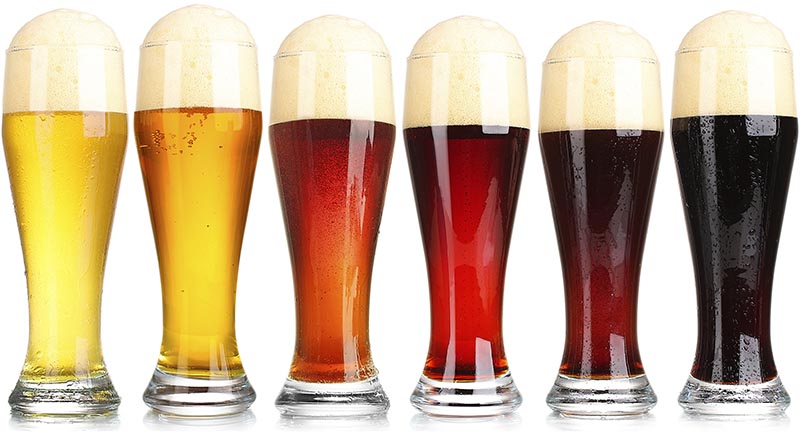 Beer color is often the first thing you notice when drinking a brew. It has a huge effect on your expectation of the beer, and beers that don’t fit the drinker’s expectations can be confusing or considered out of style. Imagine going to a bar and ordering stout and the beer comes back pale. Or you ask for a Pilsner and the beer you get is brown. You’d certainly send the beer back and ask for something else!
Beer color is often the first thing you notice when drinking a brew. It has a huge effect on your expectation of the beer, and beers that don’t fit the drinker’s expectations can be confusing or considered out of style. Imagine going to a bar and ordering stout and the beer comes back pale. Or you ask for a Pilsner and the beer you get is brown. You’d certainly send the beer back and ask for something else!
If you like to compete in homebrew competitions, it’s essential to present a beer within the color parameters for a particular beer style. There are a good number of beer calculators out there which will help you approximate a beer’s color as you’re developing a beer recipe, but after you brew the beer, you may want to measure your beer’s color to see how close you got to your estimate. While it’s possible to conduct a lab test with a light spectrometer and achieve a very specific result, for most of us, we can do the test with the naked eye and get reasonably accurate results.
 The Beer Judge Certification Program has developed a method for measuring beer color. It involves taking a sample of beer and placing it in a glass that is five centimeters in diameter. Via BJCP.org:
The Beer Judge Certification Program has developed a method for measuring beer color. It involves taking a sample of beer and placing it in a glass that is five centimeters in diameter. Via BJCP.org:
How To Measure Beer Color
- Measure a sample of beer in a clear glass or hard plastic cup with a path of 5cm (use the bottom edge of the guide as a measure). If the glass is not 5cm wide, pour a depth of 5cm and look down through the beer.
- Use a pure white sheet of paper or white tablecloth as a background.
- Use a natural light source or artificial light approximating sunlight. Do not use a flashlight to provide extra light. The color chart guide and the beer must be viewed using the same light source. Avoid casting shadows with your body or the beer glass.
- Look through the beer at the white background.
- Place the BJCP color chart guide next to the beer so that the beer (as viewed with the white background) and the guide can be seen together. Compare the color palettes and find the closest match. An exact match is unlikely, so look for the closest lightness/darkness match rather than attempting to match hue. If the sample is in between two color patches, interpolate.
 Using the BJCP color chart guide, you can easily get an approximation of your beer color in SRM (Standard Reference Method) units. To convert your measurement into Lovibond or EBC, try this Brewtoad Color Converter.
Using the BJCP color chart guide, you can easily get an approximation of your beer color in SRM (Standard Reference Method) units. To convert your measurement into Lovibond or EBC, try this Brewtoad Color Converter.
And that’s how to measure beer color in your brews. Pretty simple? Be sure to record the color of your homebrew beer in your homebrew notes!
—–
David Ackley is a beer writer, brewer, and self-described “craft beer crusader.” He holds a General Certificate in Brewing from the Institute of Brewing and Distilling and is founder and editor of the Local Beer Blog.
